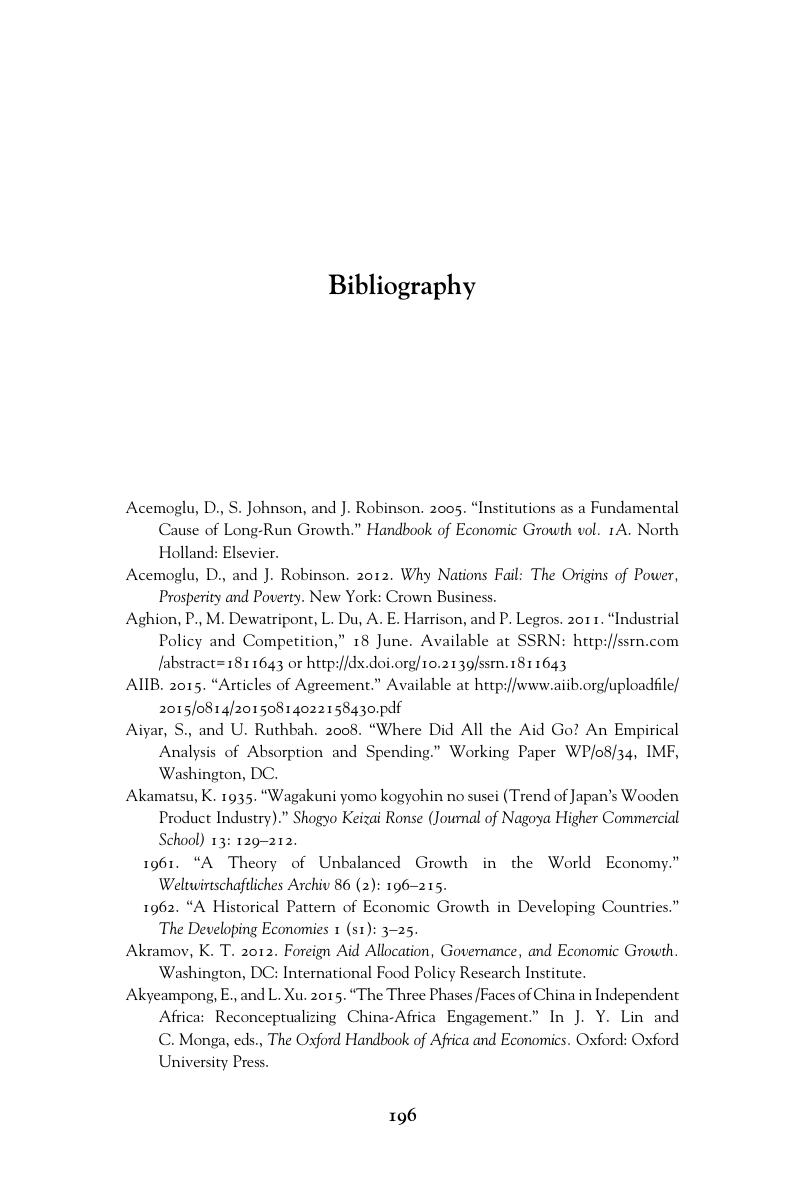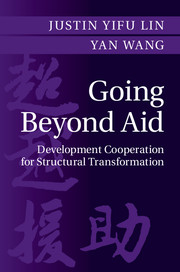Book contents
- Going Beyond Aid
- Going Beyond Aid
- Copyright page
- Contents
- Figures
- Tables
- Boxes
- Preface
- One Introduction and Objectives
- Two Structural Transformation Is Key to Development
- Three Traditional Aid Is Ineffective for Structural Transformation
- Four South-South Development Cooperation Helps Structural Transformation
- Five Using China’s Comparative Advantage to Address Africa’s Infrastructure Bottlenecks
- Six China Uses Its Comparative Advantage to Help Africa in Light Manufacturing
- Seven Effectiveness for Transformation: The Secret for Quick Wins
- Eight Prospects for Development Finance
- Bibliography
- Index
- References
Bibliography
Published online by Cambridge University Press: 20 January 2017
- Going Beyond Aid
- Going Beyond Aid
- Copyright page
- Contents
- Figures
- Tables
- Boxes
- Preface
- One Introduction and Objectives
- Two Structural Transformation Is Key to Development
- Three Traditional Aid Is Ineffective for Structural Transformation
- Four South-South Development Cooperation Helps Structural Transformation
- Five Using China’s Comparative Advantage to Address Africa’s Infrastructure Bottlenecks
- Six China Uses Its Comparative Advantage to Help Africa in Light Manufacturing
- Seven Effectiveness for Transformation: The Secret for Quick Wins
- Eight Prospects for Development Finance
- Bibliography
- Index
- References
Summary

- Type
- Chapter
- Information
- Going Beyond AidDevelopment Cooperation for Structural Transformation, pp. 196 - 212Publisher: Cambridge University PressPrint publication year: 2017



